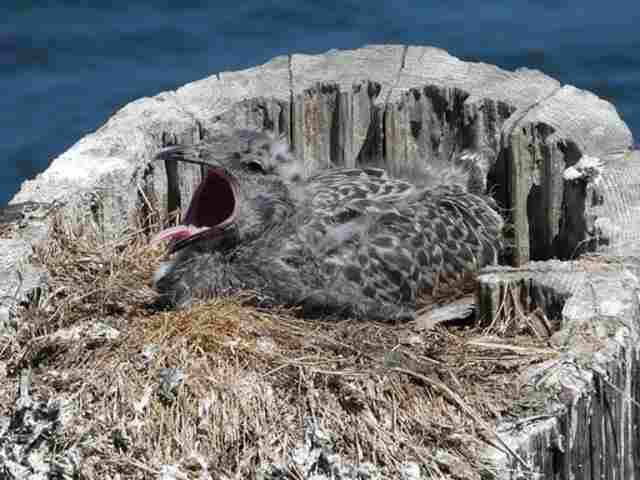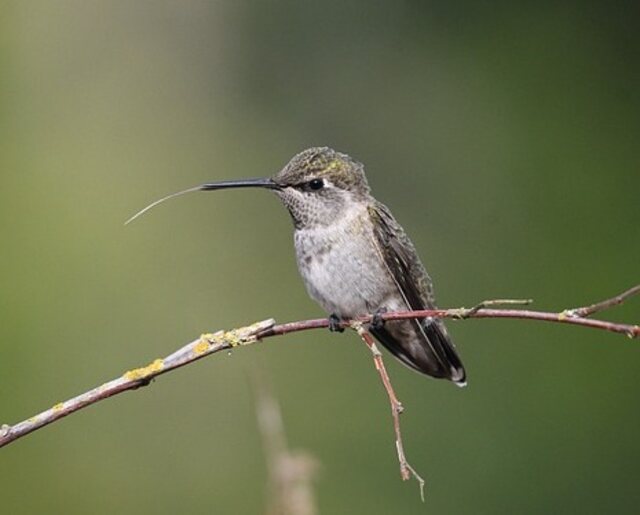Do all birds have tongues? It’s a question that has likely crossed your mind at some point – after all, we know that mammals and reptiles have tongues, so why not birds? Well, the answer may surprise you. Read on to find out everything you need to know about bird tongues!
Table of Contents
- 1 Do all birds have tongues?
- 2 What birds don’t have tongues?
- 3 Do birds have long tongues?
- 4 Do crows have tongues?
- 5 Do pigeons have tongues?
- 6 Do budgies have tongues?
- 7 Do ducks have tongues?
- 8 Do eagles have tongues?
- 9 Do penguins have tongues?
- 10 Do seagulls have tongues?
- 11 Are there any birds without tongues?
- 12 Do hummingbirds have tongues?
- 13 Which bird has a sticky tongue?
- 14 Which birds have the longest tongues?
- 15 Which bird has the longest tongue?
- 16 What are the different types of bird tongues?
- 17 How many different types of bird tongues are there?
- 18 What do birds use their tongues for?
- 19 Author
Do all birds have tongues?
All birds have tongues, though they vary in size and shape. The smallest is found in hummingbirds, while the longest and most flexible tongue belongs to the woodpecker. Birds use their tongues for a variety of activities, including vocalizations, drinking, preening, and catching prey.
While most birds have fairly simple taste buds, some species are able to detect sweetness, bitterness, and acidity. The tongue is an important part of a bird’s anatomy. It helps them to eat, drink, and groom themselves.
Without a tongue, a bird would be unable to properly care for their feathers or eat many of the foods they need to survive. While all birds have tongues, they come in a variety of shapes and sizes depending on the species.
Read more: The Bird Tongue: A Fascinating Aspect of Avian Anatomy!
What birds don’t have tongues?
Birds are one of the few animals that have tongues. In fact, all birds have tongues, but not all birds have the same type of tongue. Some birds have long, thin tongues that they use to drink nectar from flowers.
Other birds have short, thick tongues that they use to eat insects. And some birds even have two types of tongues that are split on the ends!
Do birds have long tongues?
A bird’s tongue is specially adapted to help the bird eat. The size of a bird’s tongue varies according to the species of bird. The longest recorded tongue belongs to the Northern Flicker, measuring 4 inches. Most birds have tongues that are about the same size as their beaks.
The tongue of a typical hummingbird is forked and very long, measuring about 3/4 of an inch. The hummingbird uses its long tongue to reach deep into flowers to drink nectar. Some birds use their tongues to catch prey. For example, the pelican has a very long, thin tongue that it uses to scoop up fish from the water.
Birds tongues are covered with tiny projections called papillae which help them grip their food so they can swallow it whole. Some birds also use their tongues to preen their feathers.
Do crows have tongues?
Crows have tongues just like any other bird. However, their tongues are relatively small and not very mobile. This limits the kinds of sounds they can make with their vocalizations.
Despite having limited tongue movement, crows are still able to make a wide range of sounds by modulating the shape of their beaks. Their beaks can open and close rapidly, which allows them to produce a variety of clicks, caws, and other noises.
Do pigeons have tongues?
Pigeons actually have a piston-like tongue that they use to drink water. The tongue is attached to the floor of the mouth and is covered in small, backward-facing spines. These spines help the pigeon to lap up water quickly.
The tongue also helps the pigeon to eat seeds and other small food items. The spines on the tongue help to hold onto the seed so that it can be swallowed whole.

Do budgies have tongues?
Most people are surprised to learn that budgies do have tongues! These little birds use their tongues for preening, eating, and drinking. The tongue is also responsible for the budgie’s chirping sound.
The tongue is a very important part of the budgie’s anatomy. It is long and narrow, and it is covered in tiny hooks called papillae. The papillae help the budgie to grip onto seed shells and other small objects.
Budgies also use their tongues to keep their beaks clean.
Do ducks have tongues?
Yes, ducks do have tongues. Ducks are equipped with a long, thin tongue that helps them to preen their feathers and keep them clean. The tongue also aids in the duck’s eating habits, as it allows the duck to grab food and bring it back to its mouth.
While the duck’s tongue is not as visible as some other animals’ tongues, it is an important part of the duck’s anatomy. The tongue is used for many different purposes, including eating, drinking, and grooming.
Do eagles have tongues?
Eagles do have tongues. Eagles’ tongues are short, thin, and slightly curved. They are covered in small bumps called papillae, which help the eagle grasp food and aids in swallowing. Eagles use their tongues to eat both meat and fish.
While most birds use their beaks to tear food into manageable pieces, eagles use their powerful talons to rip their prey apart. They then use their tongue to shove the food into their throats. The tongue’s papillae help hold the food in place while the eagle swallows.
Do penguins have tongues?
Penguins do have tongues, and they are used for a variety of purposes. The tongue of a penguin is relatively small and is covered in keratinized bristles.
These bristles help the penguin to grip onto their prey and shove it down their throat. The tongue also helps to keep the penguin’s beak clean as well as assist in preening their feathers.
Do seagulls have tongues?
Yes, seagulls have tongues. Their tongues are triangle-shaped and help them to eat their favorite food – small fish. Seagulls can’t chew food, so they use their tongue to help break it down.
Seagulls also use their tongue to help them drink water. They dip their tongue in the water and then suck the water up. This helps them stay hydrated.
Lastly, seagulls use their tongue to help them preen. They use their tongue to reach the feathers on their back that they can’t reach with their beak. This helps keep them clean and looking good.

Are there any birds without tongues?
All birds have a tongue. Although the tongues of most birds are relatively small, some, such as the woodpecker, have a very long and agile tongue. The tongue is used for preening, feeding, and drinking. It is also used for vocalization in some cases. The shape and size of a bird’s tongue vary depending on its diet and feeding habits.
Some birds, such as hummingbirds, can extend their tongues up to twice their body length to reach nectar at the bottom of flowers.
There are no known species of bird that do not have a tongue. Even though they may be small and not always visible, all birds have tongues.
Do hummingbirds have tongues?
Do hummingbirds have tongues?
Yes, all hummingbirds have tongues. The tongue is a long, thin tube that is rolled up inside the mouth when not in use. When the hummingbird wants to drink nectar from a flower, it extends its tongue out of its beak and into the liquid. The tongue has small hairs on it that help lap up the nectar and direct it into the bird’s throat.
Which bird has a sticky tongue?
Woodpeckers are known for their sticky tongues, which help them to eat insects. The tongue is attached to the back of the skull and extends through the nostril. Woodpeckers use their tongues to snag insects that are hidden in crevices.
The sticky saliva on the tongue helps to keep the insect in place so that the woodpecker can eat it. Some other birds also have sticky tongues, but woodpeckers are the most well-known for this adaptation.
Which birds have the longest tongues?
When it comes to tongue length, woodpeckers and hummingbirds take the cake. Woodpeckers, for instance, can have tongues that are up to four inches long! That’s almost one third of the length of their entire body.
And while four inches may seem like a lot, some hummingbirds have tongues that are even longer. In fact, the longest recorded hummingbird tongue was over six inches long!
So why do these birds need such long tongues? Well, for woodpeckers, it helps them reach deep into tree crevices to snag insects for dinner.
Hummingbirds need long tongues to lap up nectar from flowers. And since they visit hundreds of flowers each day, they need a tongue that can reach deep into the flower to get every last drop of sweet nectar.
Which bird has the longest tongue?
The Northern Flicker, a member of the woodpecker family, has the longest tongue of any bird in North America. This unique adaptation allows the bird to gather nectar from flowers, and reach deep into crevices to capture insects for food. The Northern Flicker tongue measures in at 4 inches long. This is twice the length of the bird’s beak!

What are the different types of bird tongues?
There are many different types of bird tongues, each adapted for a different purpose. The most common type of tongue is the muscular tongue, which is used for preening, drinking, and grooming.
The grooved tongue is used for feeding on nectar, and the piston tongue is used for sucking up water. The sticky tongue is used for catching insects, and the nectar tongue is used for sipping nectar from flowers.
How many different types of bird tongues are there?
Birds have different types of tongues for different purposes. The five main types of bird tongues are: muscular, grooved, piston, sticky, and nectar. Each type of tongue is adapted to the bird’s diet and feeding habits.
What do birds use their tongues for?
Birds use their tongues for a variety of tasks including drinking, eating, and grooming. The tongue is a very important part of a bird’s anatomy and is used in many different ways. The tongue is used primarily for feeding.
Birds use their tongues to lap up water or reach into crevices to gather food. The tongue can also be used to preen feathers. By running the tongue along the feathers, birds can remove dirt and oil from their plumage.
The tongue is also used in communication. Certain birds use their tongues to make sounds that help them attract mates or warn others of danger. The toucan, for example, uses its large and brightly-colored tongue to make loud calls that echo through the forest canopy.
Related Post: Do Birds Have Taste Buds? Everything You Need To Know!



